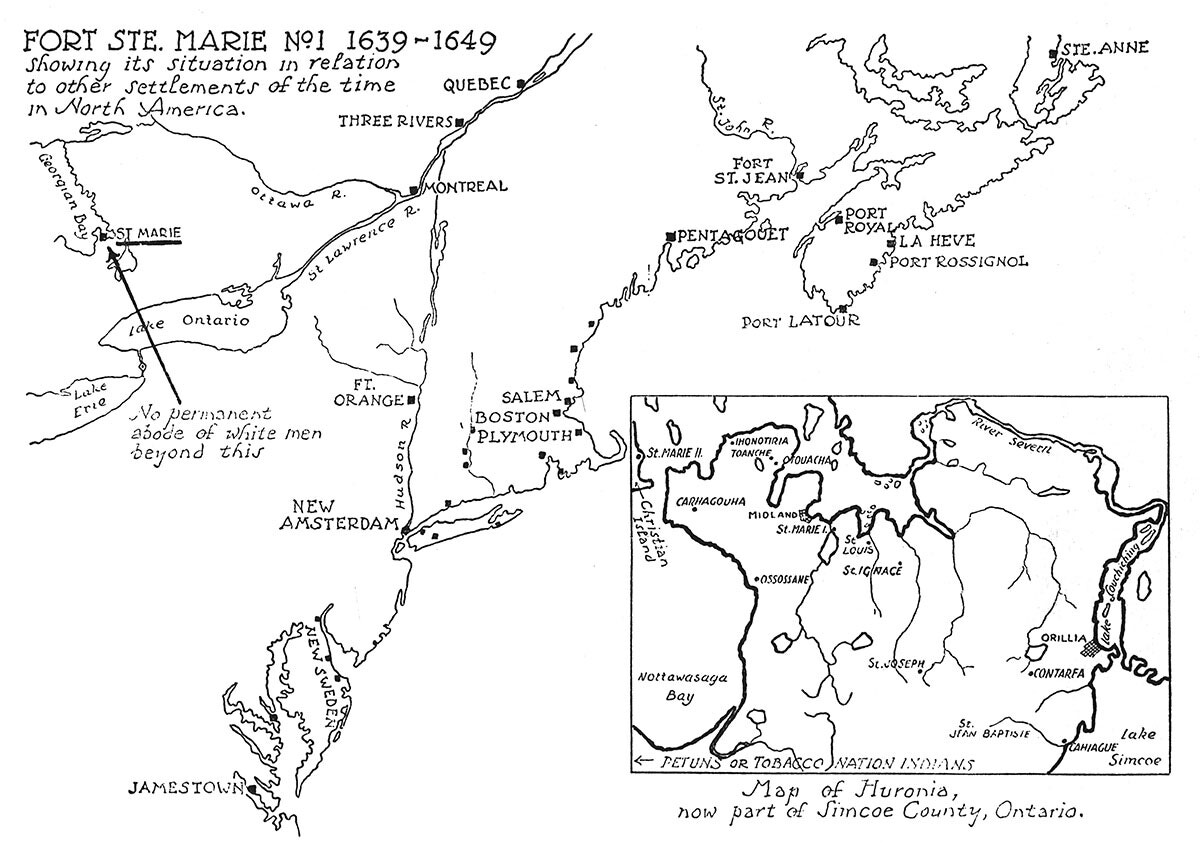Fort Ste. Marie No. 1
Credit: Library and Archives Canada, Acc. No. 1972-26-297
Remarks
C.W. Jefferys' notes about this picture from The Picture Gallery of Canadian History Volume 1
For the history of the Jesuit mission to the Hurons and the locality of the various villages the general reader is referred to Old Huronia, by Father A. E. Jones, S.J., published by the Ontario Bureau of Archives, Toronto; to Indian Village Sites in Simcoe County, by A. F. Hunter; and to The Martyrs of Huronia, by Father E.J. Devine, S.J.
Fort Sainte Marie No. 1 has recently become the property of the Jesuits. The ruins are now being cleared and the whole area excavated under the direction of the Royal Ontario Museum of Archaeology. The foundations of several buildings have been unearthed and numerous relics of the French occupancy have been discovered. See Article by K. E. Kidd in The Canadian Historical Review, Dec., 1941. The work of excavation was continued during the summer of 1942. The foundation stones of buildings, fireplaces, etc., were unearthed and show that most of the houses were grouped toward the western portion of the area. Among the many articles discovered were the leg bones of domestic fowl. They are much heavier than those of the fowl of today, and are armed with long, stout spurs. The discovery of these fragments enables us to estimate the degree of change that has been produced by the breeding of domestic fowl during the last three hundred years. The bird of the seventeenth century resembled more closely the original wild fowl from which it was developed.
Published References
- Jefferys, Charles W. 1942 The Picture Gallery of Canadian History Volume 1, p. 102




Comments